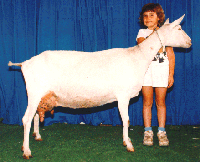
4) The Quran on the Source of the Constituents of Animal Milk:
This is defined in the Quran in strict accordance with the data of modern knowledge (sura 16, verse 66):
"Verily, in cattle there is a lesson for you. We give you to drink of what is inside their bodies, coming from a conjunction between the contents of the intestine and the blood, a milk pure and pleasant for those who drink it."
The substances that ensure the general nutrition of the body come from chemical transformations which occur along the length of the digestive tract. These substances come from the contents of the intestine. On arrival at the intestine at the appropriate stage of chemical transformation, they pass through its wall and towards the systemic circulation. This passage is effected in two ways: either directly, by what are called the 'lymphatic vessels', or indirectly, by the portal circulation. This conducts them first to the liver, where they undergo alterations, and from here they then emerge to join the systemic circulation. In this way everything passes through the bloodstream.
Among Herbivores, cranial fermentors or ruminants have a large, multicompartmented section of the digestive tract between the esophagus and true stomach. These forestomachs house a very complex ecosystem that supports fermentation. Examples of ruminants are cattle, sheep and deer. In all animals the small intestine is the only site in the digestive tract where simple sugars and amino acids can be absorbed. Ruminants can utilize dietary starch, but very little of it is absorbed as glucose. Rather, starch and other soluble carbohydrates are fermented to volatile fatty acids in the forestomachs.

Volatile fatty acids (VFA's) are produced in large amounts through ruminal fermentation and are of paramount importance in that they provide greater than 70% of the ruminant's energy supply. Virtually all of the acetic, proprionic and butyric acids formed in the rumen are absorbed across the ruminal epithelium, from which they are carried by ruminal veins to the portal vein and hence through the liver.

Let's put some of the academic information presented here into perspective. The little goat pictured here weighed about 200 lb when this picture was taken and produced 1570 kg of milk in a 305 day lactation. Her milk was roughly 4% lactose, 3.5% protein and 3.6% fat. This means that, for the sole task of producing milk, this goat has to synthesize about 250 grams of lactose and 180 grams of protein and 185 grams of fat every day. Essentially all the glucose in that lactose is synthesized in the liver and most of that synthesis is from proprionic acid generated by fermentation. Likewise, much of the fat is synthesized from ruminal acetate. When you consider that synthesis of lactose and milk fat are only two of many, many processes that are supported by volatile fatty acids, the process of fermentation in herbivores gains new meaning.
The constituents of milk are secreted by the mammary glands. These are nourished, as it were, by the product of food digestion brought to them via the bloodstream. Blood therefore plays the role of collector and conductor of what has been extracted from food, and it brings nutrition to the mammary glands, the producers of milk, as it does to any other organ.
Here the initial process which sets everything else in motion is the bringing together of the contents of the intestine and blood at the level of the intestinal wall itself. This very precise concept is the result of the discoveries made in the chemistry and physiology of the digestive system. It was totally unknown at the time of the Prophet Mohammed and has been understood only in recent times. The discovery of the circulation of the blood, was made by Harvey roughly ten centuries after the Quranic Revelation.
Next: The Quran on Reproduction in Plants